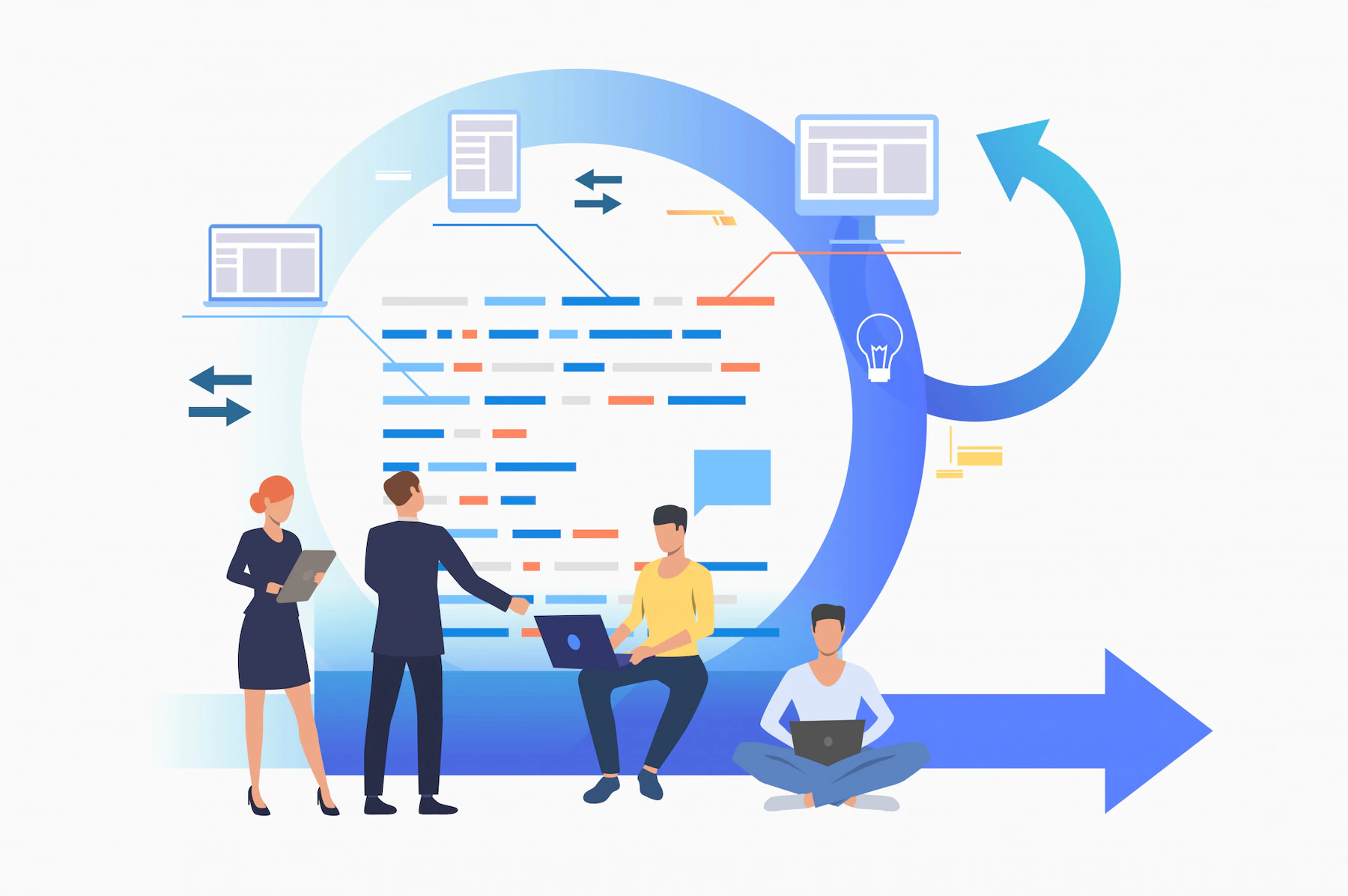- Home
- Business Innovation
- Introduction to Lean Management: principles and phases
Business Innovation
5
min read
Introduction to Lean Management: principles and phases


Don't you want to read? Try listening to the article in audio mode 🎧
Introduction
Lean management has its roots in a corporate management vision oriented towards constant improvement and evolution. No matter whether it is a product or manufacturing company, or whether it is a large, medium or small-sized service company: the lean approach can be applied to any type of company. The main challenge of lean management, in fact, is to reduce waste of time by creating and managing standardized processes that help business efficiency. The rationalization of processes will help to focus on how to generate effective value not only towards the end customer, but also within the company itself, encouraging the growth and development of internal resources, starting with top management.What is Lean Management?
Lean management is based on lean thinking, that is the analysis of wasted time within a company and its reduction or elimination through the creation of method and process. Referring to lean thinking just as a working methodology would risk being reductive. Lean thinking, in fact, brings with it the need to evolve and improve mindset, culture and corporate values, looking for innovative and resolving solutions to specific problems. The origins of lean management date back to the Toyota Production System (TPS), developed by Taiichi Ohno, an industrial engineer at Toyota. The TPS is proposed as an alternative production system in of the post-war Japanese market, characterized by lack of resources and a low and uneven market demand. Ohno studied the American Fordist system looking for inspiration to create a model that would adapt to the Japanese one. Ohno learned from the Fordist system the importance of measuring and analyzing working times and, secondly, the need to create and apply standard working methods. However, the discovery of the American supermarket contributed most to the creation of the TPS method. Ohno was struck by this consumption model, then not very common in Japan, in which the consumer could choose the products independently, take them from the shelves, and independently go to the cashier to pay. Between the 1950s and 1980s, inspired by these elements, the Toyota Production System was strengthened and enhanced. Its goal is to guarantee high quality, at lower costs, with fast delivery times and with a strong sense of belonging and responsibility of individual workers. The main pillars of the TPS model that introduce lean management are:- just in time, which consists in the need to produce on the basis of actual demand
- autonomation, autonomy and automation, that is automation aided by a human component, which consists in automatically identifying errors and anomalies. These automatisms help the individual worker to save time, who can instead concentrate on activities with higher added value.
The principles of Lean Management
The 5 principles of the lean model, applicable to business management, but also to the management model of a project are:- Define value: in this phase, it is necessary to understand what is the real value that, as a company, in a project management, in the sales of a product or a service, we generate towards our final customer. To do this, you need to look at everything through the eyes of the customer. In this case, the question to ask is "how much would customers be willing to pay if they knew what lies behind the production process of my product or service?".
- Map the value stream: In order to define customer value, and to answer the query above, we will need to question ourselves about our workflow and analyze it thoroughly. This will help us to identify any inefficiencies, redundancies, waste of time, low added value activities that we usually carry out and which do not generate real value for the customer; in the same way we will be able to understand which are the activities of greatest value, the one on which it is important to focus on, and which generates greater customer satisfaction. At this stage, we will also trace assets, which despite not being of value, are still necessary and non-negotiable.
- Create flow: having clear the value that the customer expects and the inefficiencies of our process, we will be ready to optimize the flow and find real optimization solutions. At this point, we will be able to reduce the waste of time and the inefficiencies generated by low value-adding activities that do not create results, or even find work methods that allow us to automate repetitive activities. We will recover the time to focus exclusively on what generates real value and satisfaction for our final customer.
- Establish pull: activities with high added value must always be driven by a customer demand, according to a PULL-based system. The end customer, therefore, must really perceive these activities as important which, in turn, must respond to an actual customer need. The risk we may incur, in fact, is that even a high-value activity represents a waste of time if its value is not really perceived or needed by the customer.
- Pursue perfection: it will be necessary to maintain an approach oriented towards continuous evolution and improvement of our process. The drive towards perfection must be constant and, according to the best of Japanese philosophies, it is fundamental to maintain a profound humility in understanding that we never really reached the goal. Thus, it will be possible to always act in an innovative way, following high quality standards.
The phases of Lean Management
Among the most widespread methodologies that guarantee the real application of lean management, we can find that of Deming cycle (PDCA) - based on Plan, Do, Check and Act steps. This method is characterized by a cyclical and circular nature. Each of these steps that we are going to describe, will recur in terms of continuous improvement and experimentation. The Deming cycle is a method that is structured in four main steps:- Plan: it is the phase of defining the goals and expected results, on the basis of which the strategy, the action plan and the process guidelines are defined.
- Do: it is the executive phase in which what was previously planned takes place. Here, it will be necessary to pay particular attention to following the targets set out initially, and, therefore, stick to them.
- Check: it is the phase where we verify that there are no discrepancies between the two previous phases, or rather, between what was planned and what was actually carried out, in terms of activities.
- Act: according to the results in the previous verification stage, any corrections, improvements, process optimization will be implemented with a view to continuous improvement. This last phase brings us back to the plan step.
The benefits of Lean Management
The main benefits deriving from lean management are:- streamlining of processes
- greater effectiveness and quality in achieving the ultimate goals
- reduction of working times, especially in relation to repetitive and low value activities
- greater qualitative focus on activities with higher added value
- development of individual skills and resources empowerment
- continuous improvement of the product or service offered, thanks to the attention to the customer's objectives
- growth of perceived value of the product or service.
Article updated on: 09 August 2023

Don't Waste Your Talent. Turn It Into a Career With a Course That Fits Your Needs!
Talent Garden is your Digital Skills Academy, offering courses in Digital Marketing, UX Design, Digital HR and Data Analysis designed to launch your career.
Keep reading

4
min read
How to become a Chief Risk Officer (or Risk Manager)
What is Risk Management: the definition Risk management is a task that includes all identification processes, ...
Talent Garden
04/03/2022

4
min read
The 12 Principles of Agile Manifesto
Agile Manifesto is the establishment of the most recent methodologies of project management. This methodology is ...
Talent Garden
20/10/2021

5
min read
What is Google Tag Manager, how it works and why to use it
A Tag Manager, formally Tag Management System, is a platform that allows you to manage tags, a term used to indicate ...
Talent Garden
18/05/2022

8
min read
The Evolving Landscape of Project Management
Let’s start with a question: Do we still need project managers? Well, the answer is a big, unequivocal yes. For many ...
Talent Garden
06/10/2023
